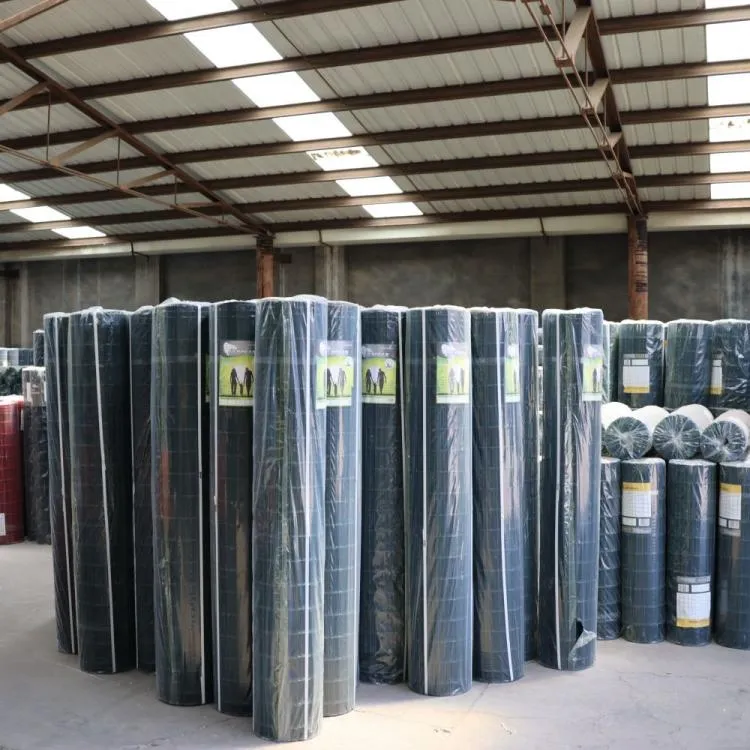Understanding Weld Mesh Gauge Measurements and Their Applications in Various Industries
Understanding Weld Mesh Gauge An Essential Guide
Weld mesh, also known as welded wire mesh, is a versatile material widely used in construction, agriculture, and various industries due to its strength, durability, and cost-effectiveness. One of the crucial aspects of weld mesh is its gauge size, which refers to the thickness of the wires used in the mesh and significantly impacts the mesh's overall strength, application, and performance.
What is Weld Mesh Gauge?
The term gauge in the context of weld mesh denotes the diameter of the wire before it is welded together to form a grid. Mesh gauge can be expressed in various units, such as inches or millimeters, but it is often identified using a standardized wire gauge system. The gauge number decreases as the wire diameter increases, meaning a lower gauge number indicates a thicker wire. For example, a 4-gauge weld mesh has a thicker wire than a 10-gauge mesh.
Importance of Wire Gauge in Weld Mesh
The gauge of the wire is critical for determining the ready-to-use mesh's strength and application suitability. Thicker wires (lower gauge numbers) provide greater tensile strength and load-bearing capacity, making them ideal for heavy-duty applications, such as structural reinforcement, fencing for livestock, or support in concrete and masonry structures.
Conversely, thinner wires (higher gauge numbers) offer more flexibility and are typically more suited for use in less demanding applications, like decorative features, lightweight partitions, or small animal enclosures. Understanding the appropriate gauge for specific uses is essential in selecting the right weld mesh that meets both safety and performance requirements.
Applications of Weld Mesh
Weld mesh is utilized in a myriad of applications across different sectors
weld mesh gauge

1. Construction Weld mesh is commonly used in concrete reinforcement, supporting structural integrity in buildings and pavements. The mesh prevents cracking and enhances durability. 2. Fencing Welded wire mesh provides security and containment in agricultural and residential settings. Depending on the gauge, it can be used to enclose properties, protect crops from wildlife, or fence in livestock.
3. Industrial Use Industries use weld mesh for equipment protection, safety barriers, and storage solutions. The sturdiness of lower-gauge mesh is excellent for heavy machinery applications.
4. Architectural Features In decorative applications, weld mesh adds an aesthetic value to building designs, such as facades, railings, and screens.
5. Agriculture Farmers employ welded wire mesh for building cages, fencing, and creating supports for growing plants.
Choosing the Right Weld Mesh Gauge
When selecting the appropriate weld mesh gauge, consider the specific needs of your project. Factors such as load-bearing requirements, environmental conditions, and intended use play a significant role in your decision. Always assess compatibility with the desired application to ensure safety, efficiency, and longevity.
Conclusion
Weld mesh gauge is a crucial consideration in various applications, affecting not only the effectiveness of the material but also its longevity and safety. By understanding the relationship between wire gauge and mesh strength, individuals and businesses can make well-informed choices tailored to their specific needs. Whether for construction, safety, or decorative purposes, the right weld mesh gauge can provide the perfect blend of functionality and durability, making it an invaluable component across many sectors. Understanding these fundamentals ensures that projects are not just adequately equipped but also structurally sound and efficient.
-
Space-Saving Chain Fence Hacks Vertical Gardening with Cyclone MeshNewsJul.16,2025
-
Innovations in Iron Nail Wire Production for Modern ConstructionNewsJul.16,2025
-
Creative Uses of Wire Netting Fence in Modern Landscape DesignNewsJul.16,2025
-
Barbed Wire Fence Innovations in Anti-Climb TechnologyNewsJul.16,2025
-
Architectural Uses of Umbrella Nails for Aesthetic Roof DesignsNewsJul.16,2025
-
Architectural Uses of Razor Barbed Wire in Secure Urban DesignNewsJul.16,2025




